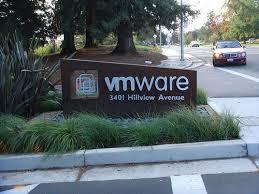VMware Workspace Suite will combine PC, laptop and mobile device management via virtualized workspaces. VMware's AirWatch acquisition plays a big role.


Internet Of Things: 8 Pioneering Ideas
Internet Of Things: 8 Pioneering Ideas (Click image for larger view and slideshow.)
IT has struggled for years with the difficulties of keeping desktop applications up to date, supporting the BYOD trend, and provisioning a variety of mobile devices. VMware is offering virtualized user workspaces as a way to solve these issues -- not one at a time, but all at once.
The answer is to virtualize the end user workspace, tailor it to the device in use at any given time, and deliver it in the manner appropriate to the connection available, Sanjay Poonen, executive VP and general manager of VMware's End User Computing Group, said during recent VMworld show in San Francisco.
To get to this point, it bought a mature, desktop-as-a-service supplier -- Desktone -- last October. In January, it added AirWatch, a workspace creator that could deliver to multiple devices. Then just before VMworld opened, it acquired CloudVolumes, which has a way of delivering end user apps through layering rather than downloading to individual devices.
How do these acquisitions -- at $1.54 billion, AirWatch was VMware's priciest ever; it spent $1.26 billion for the Niciri software-defined networking firm -- add up to virtualized workspaces that cross barriers and reach devices from Windows desktop to mobile iPhones? The announcement of VMware's Workspace Suite provides part of the answer.
[Learn more about VMware's strategy. Read VMware's AirWatch Buy: Last Piece Of Mobile Puzzle?]
Workspace Suite includes CloudVolumes' ability to deliver Windows applications in slices or layers to a temporary, virtualized space on a Windows device. It's loaded as a virtual machine file all at once into memory without going through an install process. The user gets the appearance of an immediately installed application, but when done, nothing is stored on individual machines that might require a security update or upgrade later. Rather, his next use of the app will result in another delivery of layers. The process is faster than downloading applications, and the applications are easier to maintain centrally, sending out updated layers as needed. User activity doesn't need to be interrupted to allow the loading of layers in background. Dave Grant, VMware senior director of end user computing, said in an interview that such a virtual Windows application is easier to maintain centrally than a fully loaded Windows laptop or desktop.
VMware CTO of End User Computing Kit Colbert explains more about the layering approach to workspace applications in a blog post.
VMware's addition of CloudVolumes to its Horizon virtual desktop infrastructure represents a merger of centralized management characteristics with mobile device style of delivery for the end user's workspace.
It can be accessed through a Workspace Portal that includes an application catalogue acquired with the AirWatch acquisition. The Windows applications are available in the catalogue, but device specific mobile applications for the Apple iPhone or Android smartphones are listed there as well, along with SaaS apps available to enterprise employees. AirWatch provides a mobile application delivery platform that allows the user presentation to be geared to the device in use by the selected user. It recognizes Apple Macs, Windows Mobile and Windows Phone, Blackberry, and Symbian devices as well.
"Our portfolio brings more oomph to AirWatch," said Poonen at a VMworld press conference, while the incorporation of CloudVolumes delivery capabilities gives VMware what a virtual desktop infrastructure needed, "a new approach, a really dynamic delivery method." CloudVolumes deliveries scale to hundreds or thousands of users quickly, using a single golden master of an application while sending copies of its layers to multiple recipients.
The AirWatch and CloudVolumes capabilities change the nature of the competition to virtualize the desktop. "You need a Switzerland-type of player to manage across all devices," Poonen said.
Furthermore, the Workspaces Suite provides single sign-on, so mobile users, using a log-in identity, can access Windows applications, mobile apps, and SaaS from the portal's catalogue. IT managers, on the other hand, are now managing each type of virtualized end user workspace through familiar VMware virtual environment tools, such as vCenter Operations, Grant said in an interview.
VMware is leaving few future mobile computing devices off its roadmap. It announced a partnership with Google and NVIDIA to bring high performance graphics to Google's Chrome operating system-powered notebooks. The idea is to combine NVIDIA Grid virtual graphics processing units in the data center with NVIDIA Tegra K1 processors in Chromeboks, managed by VMware's Blast Performance software. The combination is expected to be able to deliver workstation caliber, graphics intensive applications to the lower cost Chromebooks.
Workspace Suite is available immediately but pricing was not disclosed. VMware representatives said questions on pricing will be handled on an individual basis through VMware sales or reseller representatives.
In its ninth year, Interop New York (Sept. 29 to Oct. 3) is the premier event for the Northeast IT market. Strongly represented vertical industries include financial services, government, and education. Join more than 5,000 attendees to learn about IT leadership, cloud, collaboration, infrastructure, mobility, risk management and security, and SDN, as well as explore 125 exhibitors' offerings. Register with Discount Code MPIWK to save $200 off Total Access & Conference Passes.
About the Author(s)
You May Also Like







